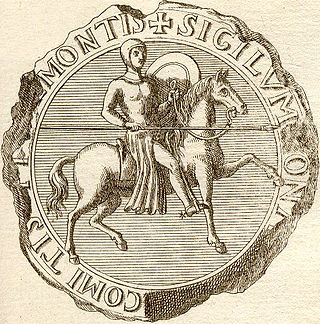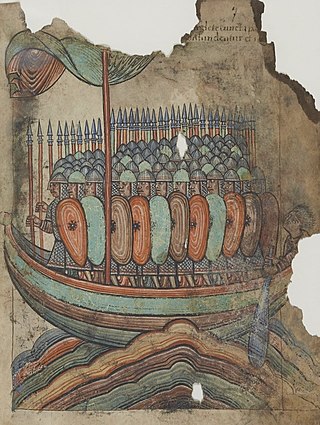
The Duchy of Brittany was a medieval feudal state that existed between approximately 939 and 1547. Its territory covered the northwestern peninsula of Europe, bordered by the Atlantic Ocean to the west, and the English Channel to the north. It was also less definitively bordered by the river Loire to the south, and Normandy, and other French provinces, to the east. The Duchy was established after the expulsion of Viking armies from the region around 939. The Duchy, in the 10th and 11th centuries, was politically unstable, with the dukes holding only limited power outside their own personal lands. The Duchy had mixed relationships with the neighbouring Duchy of Normandy, sometimes allying itself with Normandy, and at other times, such as the Breton-Norman War, entering into open conflict.
Constance was Duchess of Brittany from 1166 to her death in 1201 and Countess of Richmond from 1171 to 1201. Constance was the daughter of Duke Conan IV by his wife, Margaret of Huntingdon, a sister of the Scottish kings Malcolm IV and William I.

Alan II, nicknamed Wrybeard or Twistedbeard, Alan Varvek in Breton, was Count of Vannes, Poher and Nantes, and Duke of Brittany from 938 to his death. He was the grandson of King Alan the Great by Alan's daughter and her husband Mathuedoï I, Count of Poher. He expelled the Vikings/Norsemen from Brittany after an occupation that lasted from 907 to about 939.

Conan IV, called the Young, was the Duke of Brittany from 1156 to 1166. He was the son of Bertha, Duchess of Brittany, and her first husband, Alan, Earl of Richmond. Conan IV was his father's heir as Earl of Richmond and his mother's heir as Duke of Brittany. Conan and his daughter Constance would be the only representatives of the House of Penthièvre to rule Brittany.
Conan I nicknamed Le Tort was the Duke of Brittany from 990 to his death.

Yves Lainé is a Breton lawyer, politician and companies executive manager, now a writer, arguing for the return of Loire-Atlantique departement in the administrative région of Brittany the reunification and devolution of the historical Brittany.
Ricwin, Ricuin, Richwin, or Richovin was the Count of Nantes from 831 to 841. A Rihwinus comes witnessed the will of Charlemagne in 811.
Hawise of Rennes was sovereign Duchess of Brittany from 1066 until her death.
Lambert II was the Count of Nantes and Prefect of the Breton March between 843 and 851. Lambert ruled the county in opposition to Amaury, the puppet count installed by Charles the Bald, King of West Francia. At his death, the county was effectively in Breton control. Lambert was the son of Lambert I and his wife Itta.
Renaud (795–843) was Frankish Count of Herbauges, Count of Poitiers and Count of Nantes. His name is also spelled Rainaldus or Ragenold, and he is sometimes known as Reginald in English. He is referred to as Renaud of Aquitaine, but seems to have been a member of the Rorgonid family of Maine.
Hoël I of Brittany was an illegitimate son of Alan II and Judith. He was Count of Nantes and Duke of Brittany from 960 to 981.
Guerech of Brittany, was Count of Nantes and Duke of Brittany from 981 to 988.
Budic of Nantes was Count of Nantes from 1005 to his death in 1038.
Judicaël of Nantes was Count of Nantes from 992 to his death in 1004.
Judith of Nantes was titular Countess of Nantes from 1051 to her death in 1063.
Harvey I of Léon was a Viscount of Léon.
Guihomar III of Léon was a Viscount of Léon. He succeeded his father Harvey I.
Guihomar II de Léon was a Viscount of Léon. He is said to have succeeded his grandfather Guihomar I.
Guihomar I of Léon was one of the first Viscounts of Léon. He lived c. 970 - 1055.

Vikings were active in Brittany during the Middle Ages, even occupying a portion of it for a time. Throughout the 9th century, the Bretons faced threats from various flanks: they resisted full incorporation into the Frankish Carolingian Empire yet they also had to repel an emerging threat of the new duchy of Normandy on their eastern border by these Scandinavian colonists.





